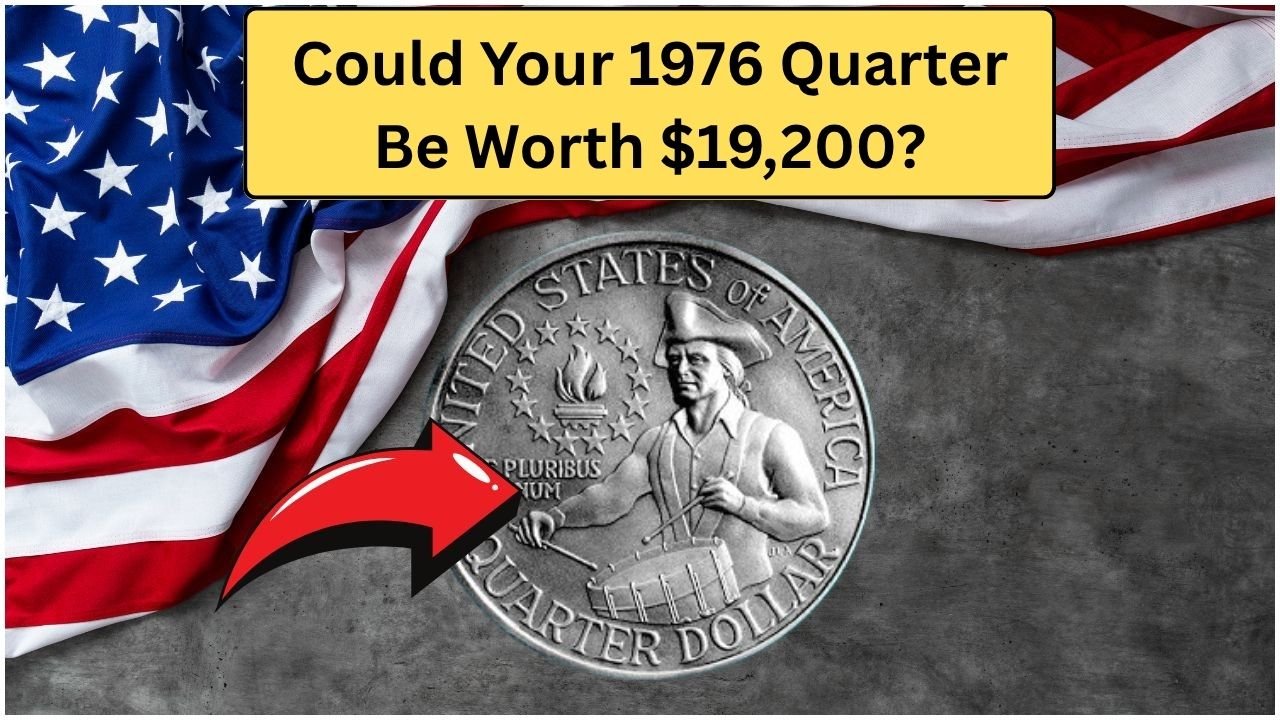Got a 1976 quarter in your change? It might be worth way more than 25 cents! The 1976 Bicentennial Quarter, made to celebrate America’s 200th birthday, is a coin some collectors pay up to $19,200 for. These quarters are still out there in pockets, piggy banks, or cash registers. Certain rare versions and special features make them super valuable. Let’s dive into why these quarters are so special and how you can spot one that could make you rich.
A Coin Celebrating America’s Big Moment
The 1976 Bicentennial Quarter was minted to mark 200 years since the Declaration of Independence. Unlike regular quarters, it has a unique design: the front shows George Washington, while the back features a colonial drummer and a torch with 13 stars, symbolizing the original colonies. These coins were made in huge numbers, so they’re common, but specific ones—like those with errors or in perfect condition—are worth a fortune to collectors.
What Makes Some 1976 Quarters So Valuable?
The value of a 1976 Bicentennial Quarter depends on its type, condition, and any rare errors. Most were made of copper-nickel, but some were struck in 40% silver for collectors, and these are worth more. The rarest are those with minting errors, like a double-struck design or missing letters. A 1976-D quarter in pristine condition sold for $19,200 at auction. Quarters from the Denver (“D”) or San Francisco (“S”) mints, especially silver ones, are the ones to watch for.
| Type | Mint Mark | Estimated Value |
|---|---|---|
| Silver Proof | S | Up to $19,200 |
| Error (Double Die) | D or None | Up to $10,000 |
| Copper-Nickel | D or None | Up to $5,000 |
How to Spot a Valuable Quarter
Finding a high-value 1976 quarter takes a bit of detective work. First, check the mint mark on the front, just below Washington’s neck. A “D” means Denver, an “S” means San Francisco (likely silver), and no mark means Philadelphia. Look for errors like doubled letters or blurry designs using a magnifying glass. Silver quarters feel slightly heavier and have a shinier look. If you think you’ve got a special one, don’t clean it—dirt or scratches can lower its value. Take it to a coin expert for grading.
- Check the mint mark and look for “S” or errors.
- Use a magnifying glass to spot doubled or missing details.
- Weigh the coin to see if it’s heavier (silver ones are).
- Store it in a soft plastic holder to keep it safe.
Real-Life Jackpot Stories
People have found these quarters by pure luck. In 2021, a Texas man discovered a 1976-S silver proof quarter in a bank roll, selling it for $12,000. Another collector found a double-die error quarter in a parking lot change machine, fetching $8,500 at auction. These stories prove valuable quarters are still circulating. Coin experts say millions of people handle change daily without checking, so your next handful of coins could hold a hidden gem.
What to Do If You Find a Treasure
If you think you’ve got a rare 1976 Bicentennial Quarter, don’t spend it! Put it in a protective sleeve to avoid damage. Contact a trusted coin dealer or grading service like PCGS or NGC to confirm its value and authenticity. Selling through a reputable auction house can get you the best price. Even if your quarter isn’t worth thousands, some are still valued at hundreds, making it worth the hunt. So, grab your change jar or check your wallet—you might just find a small fortune!
